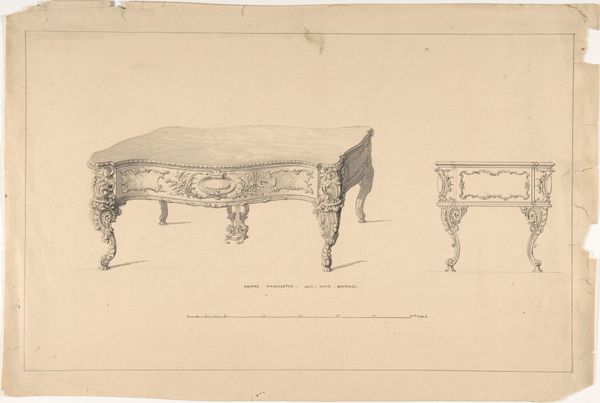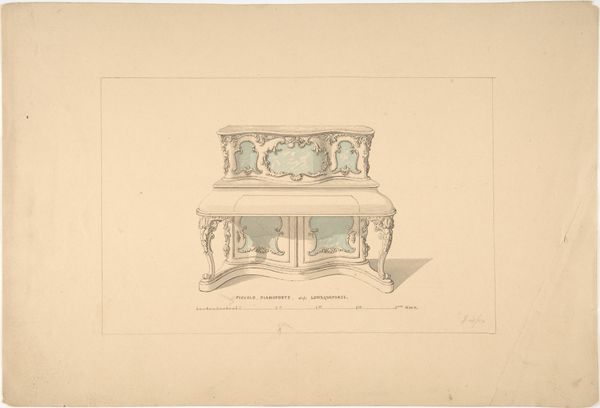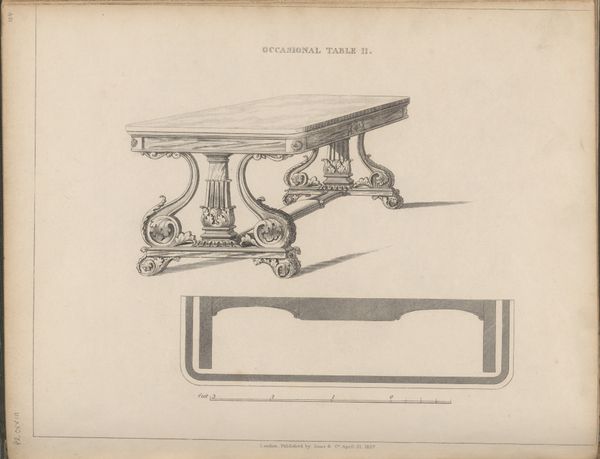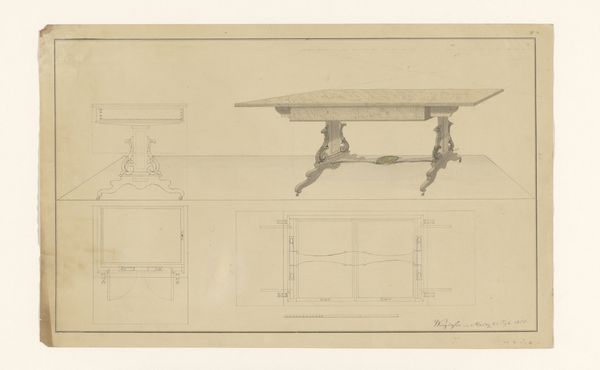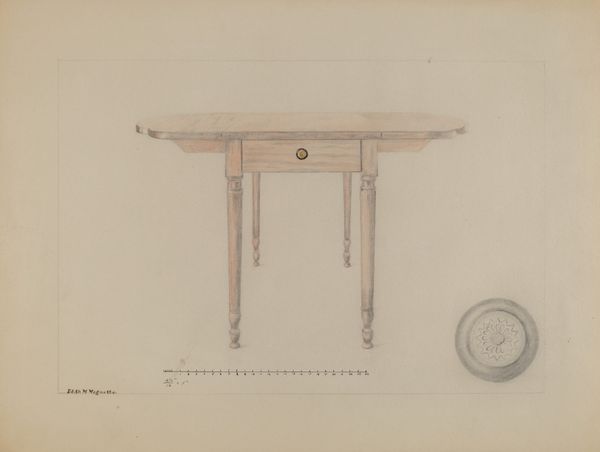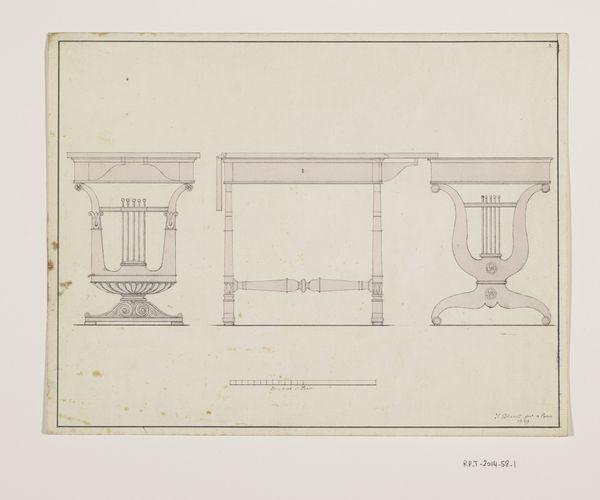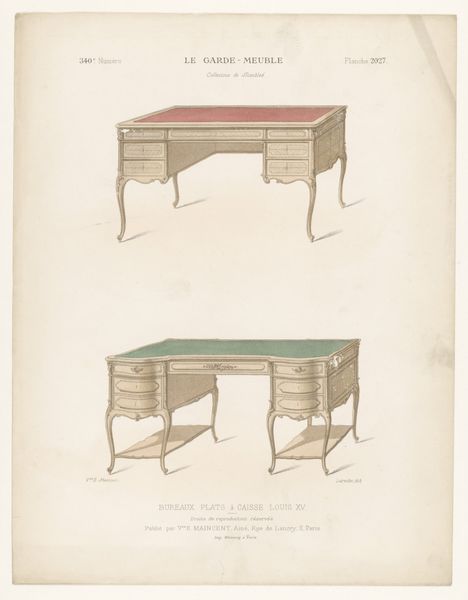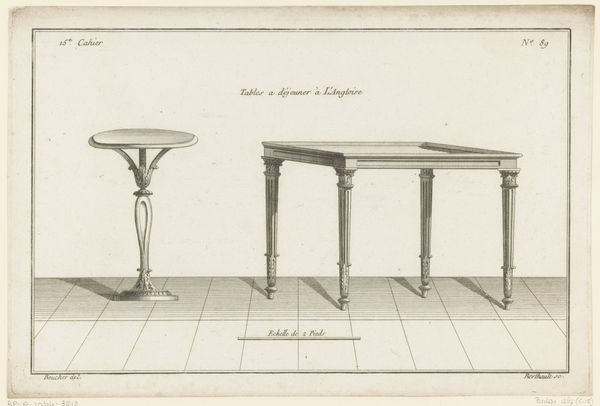
drawing, print, paper, pencil
#
drawing
#
table
# print
#
paper
#
pencil
Copyright: Public Domain
Curator: Well, this is interesting. The print is titled "Design for Library Table", and its creation is dated between 1835 and 1900, putting it in the mid-to-late 19th century. Editor: My first thought is... opulence. The intricate carvings, the flowing lines, the sheer size of the thing—it speaks to a very specific kind of status and aspiration. You can almost feel the weight of expectation it would impose on anyone sitting there. Curator: The library itself would have been a potent symbol. This wasn’t just any table, it was a stage for intellectual performance, signaling a world of power and leisure. Observe the cherubic figures adorning its facade—classicism reborn in a Victorian context. It's more than a piece of furniture; it's a statement. Editor: I see those figures too, they strike me as not just decorative, but almost guardian figures, presiding over knowledge, guarding it for the user. There's an echo of sacred spaces. And the archways, which reminds me of church architecture, what does that imply about knowledge itself in this era? Was learning akin to a spiritual pursuit? Curator: Intriguing, a link between sacred spaces and library design. Certainly, during this period, the library as an institution rose to prominence as temples of learning and intellectual enlightenment. In this period libraries contained valuable, rare books that needed protections, not that different than housing the remains of saints in reliquaries. Editor: Considering who could access libraries back then really emphasizes your point about societal power, right? The whole composition tells you that this desk design wouldn’t be in everyone's homes or used by anyone. Curator: Precisely. A piece like this helps us to think about who was producing knowledge and for whom, in the 19th century. This table suggests how deeply entwined notions of wealth, learning, and social standing were. Editor: Absolutely. Looking closer, the drawing itself offers insight, there is something quite moving in viewing a carefully designed, yet ultimately unrealized concept on paper. A glimpse into dreams. Curator: The very ephemerality of the print itself creates tension. Robert William Hume's drawing gives us an invaluable entry point for understanding the social forces at play at that time. Editor: Thank you, I feel I will never think about furniture design the same again.
Comments
No comments
Be the first to comment and join the conversation on the ultimate creative platform.

